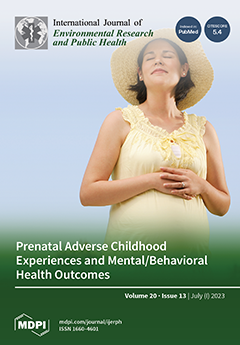Open AccessArticle
Lifestyle Related Cancer Risk and Protective Behaviors Vary among a Convenient Sample of Physically Active, Young-to-Middle-Aged Adults 18–49
by
Aldenise P. Ewing, Gregory C. Chang, Abhishek V. Henry, Jordyn A. Brown, Mahmood A. Alalwan, Donte T. Boyd, Daniel Marshall, Skylar McElwain, Alicia L. Best, Claudia F. Parvanta, Bruce L. Levin, Cathy D. Meade and Clement K. Gwede
Cited by 1 | Viewed by 2424
Abstract
It is an assumption that physically active adults lead an overall healthy lifestyle. To examine this assumption, we administered a cross-sectional, web-based survey to a sample of young-to-middle-aged US adults between 18 and 49 who self-reported participation in at least one recreational sporting
[...] Read more.
It is an assumption that physically active adults lead an overall healthy lifestyle. To examine this assumption, we administered a cross-sectional, web-based survey to a sample of young-to-middle-aged US adults between 18 and 49 who self-reported participation in at least one recreational sporting event in the past month. Logistic regressions were conducted to examine demographic characteristics associated with cancer risk and protective behaviors. Gender was represented equally (N = 938), and the average age was 32 years (SD: 8.4). Most participants reported >three days of moderate- to high-intensity physical activity (79%), but not meeting fruit and vegetable consumption guidelines (78%). Many reported current tobacco use (32%), binge drinking at least once in the past 30 days (62%), and suboptimal sun protection use (67%). Participation in lifestyle-related cancer risk and protective behaviors varied based on age, sex, education, routine doctor visits, perceived overall health, health-information-seeking behavior (how participants obtained health information), or team-based sport participation in regression models. Future interventions should be tailored to address varied cancer risk profiles among even physically active adults to encourage multiple healthy behavior changes.
Full article





